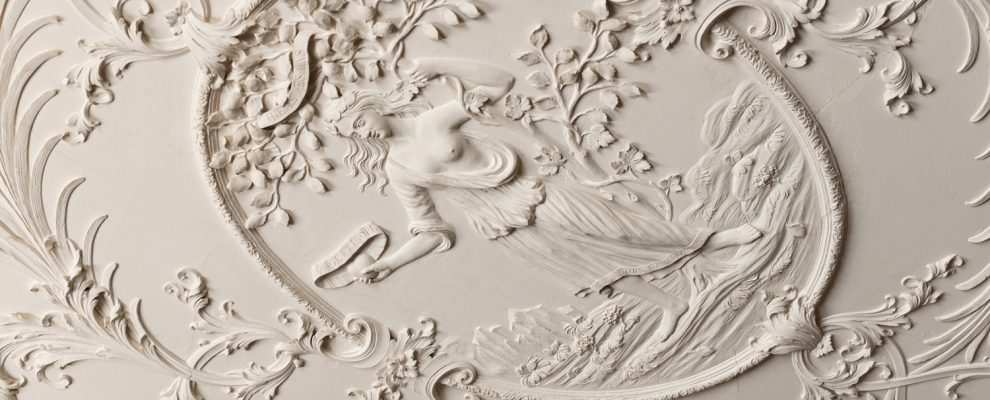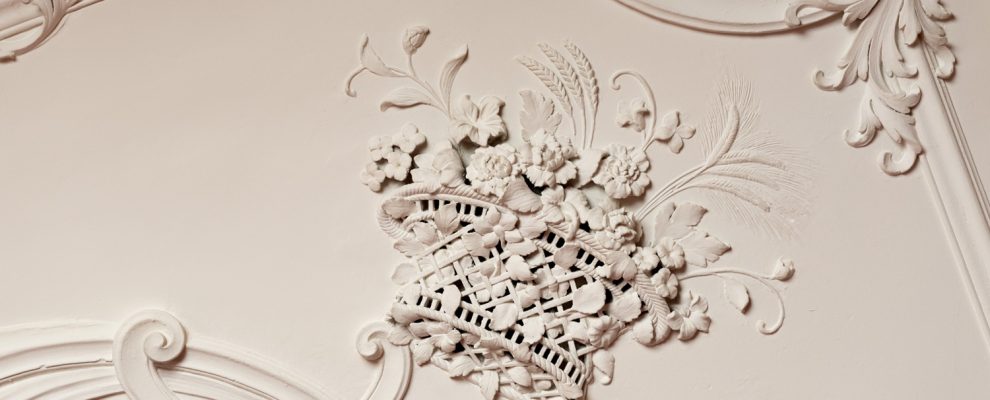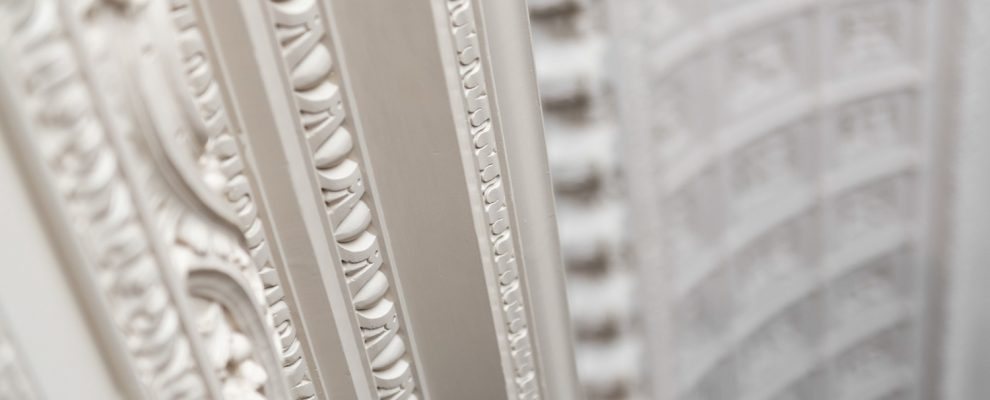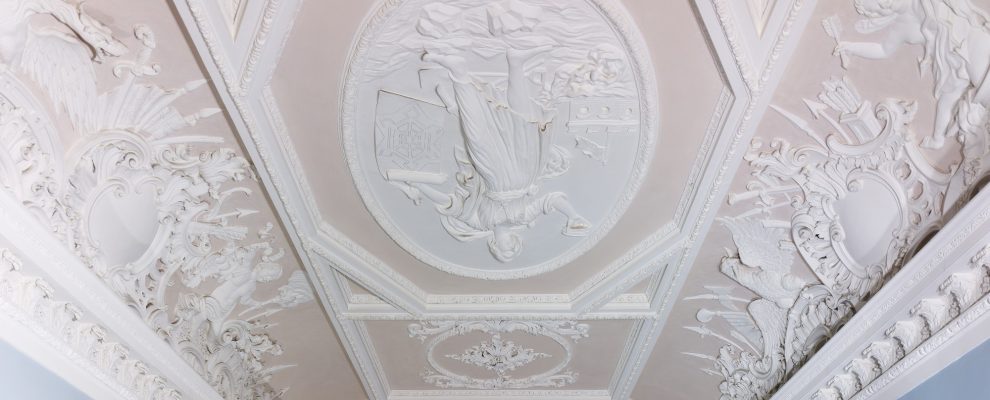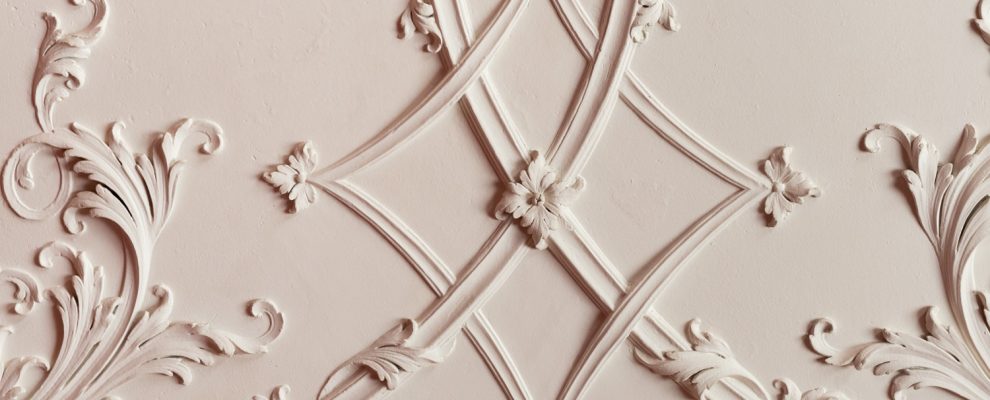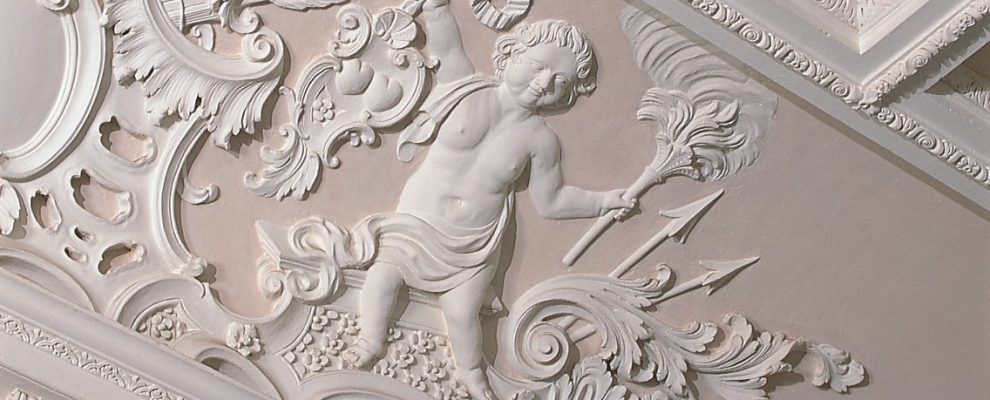Secrets of the Stucco
Decorating the ceilings of the Library, Dining Room, Drawing Room, Saloon and most magnificently of all the Great Staircase, the elaborate and delicately wrought stuccowork at Fairfax House represents an internationally important example of Rococo interior decoration.
The famous Swiss-Italian stuccoist Giuseppe Cortese, who worked in the north of England between the 1720s and 1770s, is believed to have been responsible for devising and executing this remarkable series of elaborately decorated and visually complex ceilings. Likely influenced by the wishes and tastes of the Fairfax family, the stuccowork at Fairfax House was intentionally designed reflect the function of its rooms. For example, in the Library, the ceiling stuccowork combines exquisitely wrought foliage and sumptuous Rococo scrolls, with four remarkably detailed portraits of famous literary figures: Milton, Pope, Addison and Locke. Explicitly signalling the room’s purpose these portraits at the same time also subtly underlined, to anyone visiting the house, Lord Fairfax’s literary interests and learning.
The Dining Room’s decoration similarly heralds its function, promising an abundant table with the resplendent figure of Abundantia (Abundance). Based on a design from Cesare Ripa’s ‘Iconologia’, Abundance’s cornucopia overflows with fruits symbolising the Fairfax family’s generosity as hosts. The theme of entertaining and friendship continues in the Drawing Room, where the figure of Amicitia (Friendship) stands holding a heart in one hand and grasping a flourishing elm tree (growing from barren soil) in the other – imagery which stresses the enduring nature of friendship.
The centre-piece of the townhouse’s impressive decorative scheme, however, can be found on the ceiling of the Grand Staircase. This remarkable example of mid eighteenth-century stucco uses allegory and metaphor to create a complex and challenging scheme to decipher. Potentially offering references to Britain’s supremacy in the Seven Years War as well as more covertly the Fairfax’s recusant Catholicism, its hidden and secret messages are as enjoyable to fathom as its sheer beauty is to appreciate.

